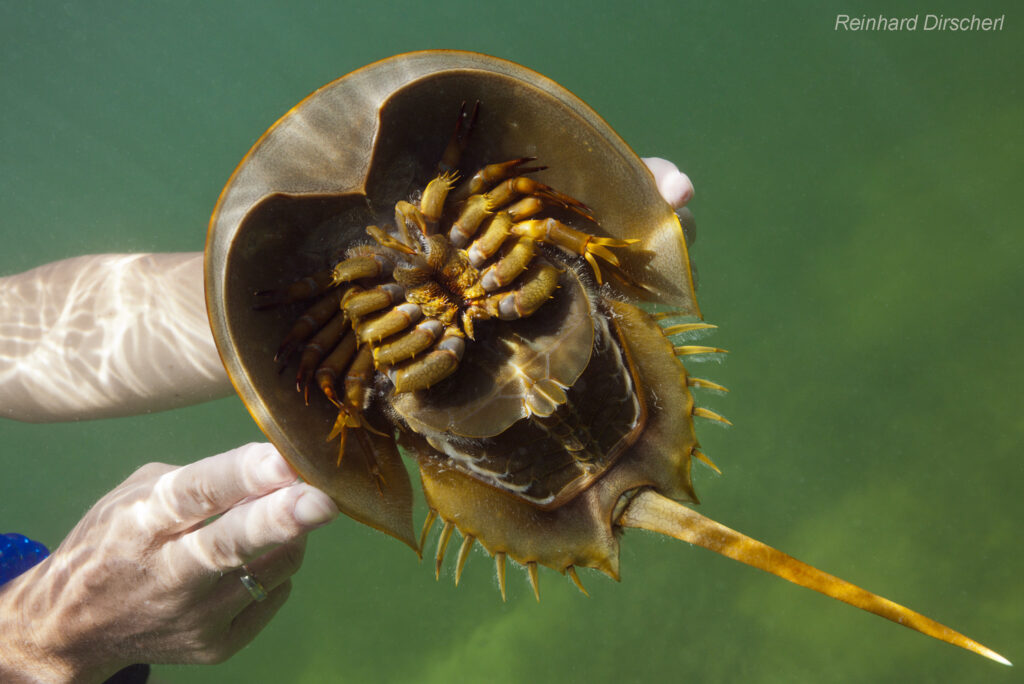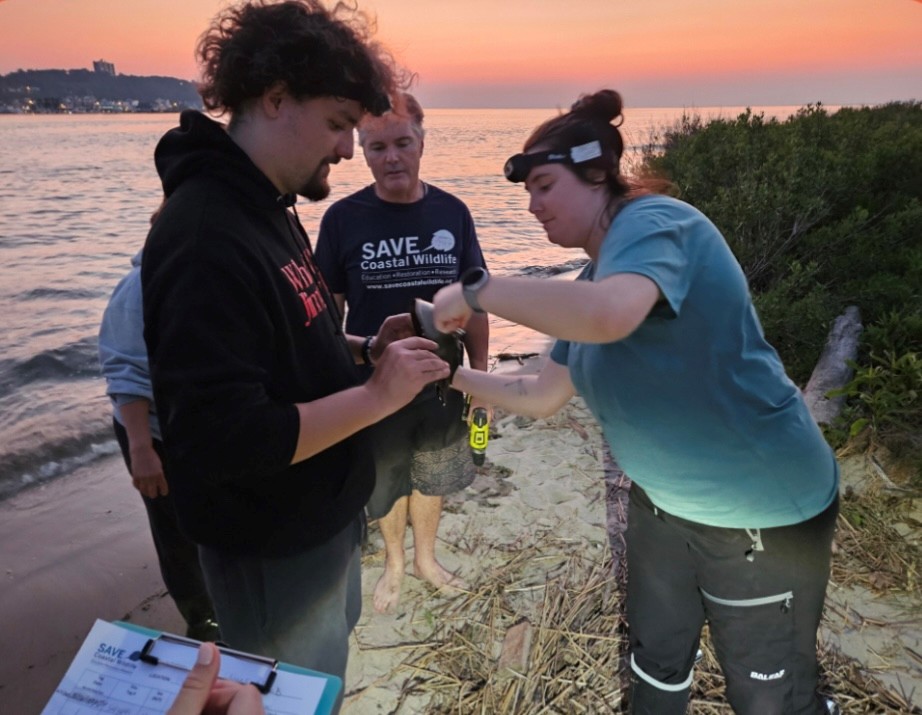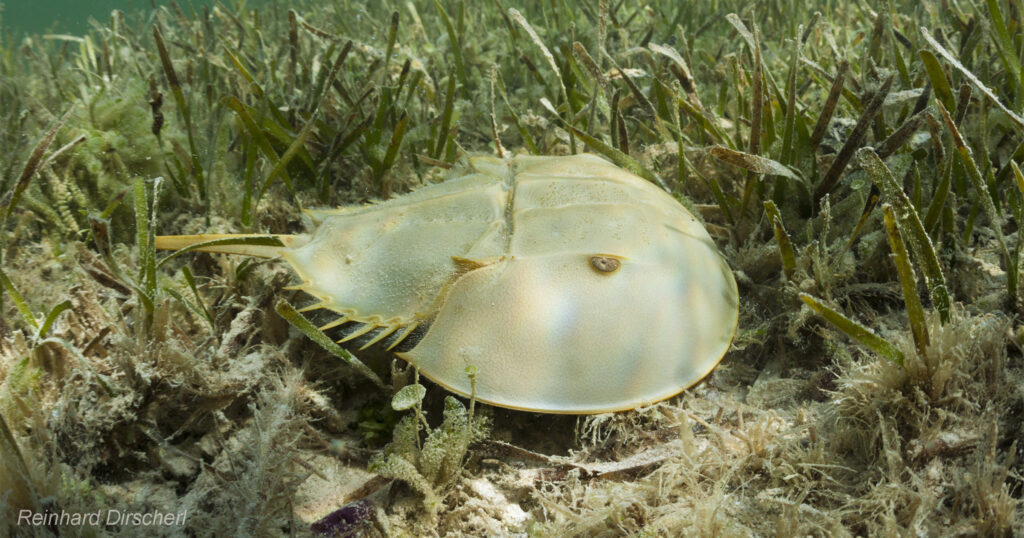Horseshoe Crab in Mangroves, Limulus polyphemus, Cancun, Yucatan, Mexico, photograph by Reinhard Dirscherl
Horseshoe Crab Day
2025
By Katelin Kukk
This month, we reached out to Sara Genke from Save Coastal Wildlife and were offered the opportunity to work alongside her and other dedicated volunteers doing fieldwork tagging horseshoe crabs on Plum Island in Sandy Hook National Recreation Area. On June 11th, we observed an impressive number (299) of horseshoe crabs, which is well above average. Over the last 6 years, the average number has been 42 crabs on the night of the same event. While one station had similar numbers that evening, others showed completely different findings.
Sara did note a troubling decline in the number of female horseshoe crabs over the years. One contributing factor could be the biomedical industry’s reliance on horseshoe crab blood. States like Rhode Island, Maine, and Massachusetts are primary harvesters of horseshoe crabs for medical testing. Although they are released, many don’t survive the event. Some go into shock, others lose their tails, and many are not returned to their original habitats.
When asked what she believes is their biggest threat, Sara states: “The best way to kind of look at it is that the horseshoe crab has been around for 450 million years. Besides losing maybe an arm along the way, their body has never changed. They’ve never had to evolve. They’ve survived 4 mass extinction events and we’re the only ones giving them trouble.”

Underside of Horseshoe Crab, Limulus polyphemus, Cancun, Yucatan, Mexico, photograph by Reinhard Dirscherl
Yucatan Photographs by Reinhard Dirscherl

Tagging horseshoe crabs at Sandy Hook National Rec Area, New Jersey, photograph by Save Coastal Wildlife
With greater awareness and action, we can help protect these resilient survivors. To learn more about horseshoe crabs and their importance, you can visit Save Coastal Wildlife’s website for more information and data. Let’s stand up for these primeval wonders!
https://www.savecoastalwildlife.org/
– – –

Spectacular creatures roamed the earth in the time long before the history of man. Species alive so far in the past, the only traces we find today are bits of rock and stone. Ages faded to dust in the wind. Yet there are those who remain. We call them Primeval Survivors. Do these remnants of the past hold the secrets of the ages?


